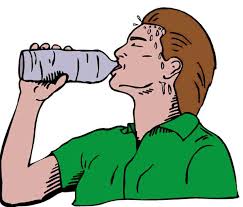The Basics for Backwashing Water Filters for Residential Applications
A backwashing filter is a water filter that cleans itself periodically by rinsing away impurities it has filtered from water. An equally important purpose of the backwash is to resettle the filter’s media bed.
Although a backwashing filter may look like a water softener and be the same size, it’s a different animal. Softeners are “ion exchangers,” not filters.
A backwashing filter is a simple device that consists of a large tank called a “mineral tank” that is filled with a filtering substance called a filter medium. (The plural is media.) Water enters the top of the tank through a special control valve and passes downward through the medium, which removes impurities and holds them. Some media do not hold impurities, but cause a change to occur. Calcite, for example, dissolves and in the process increases the pH of acidic water. The treated water then enters a tube at the bottom of the mineral tank, passes upward through the tube (called a riser), and exits the filter via the control valve.
When the filter medium is saturated with contaminants, the control valve initiates a backwash. The backwash is an operation in which water passes backward through the filter at a rapid rate. It enters the tank at the bottom via the riser tube, then passes upward through the filter medium, exiting at the top, via the control valve. The rapid upward flow, in addition to washing away stored impurities, fluffs and resettles the media bed, preparing it for another filtering cycle.
Media
Filter media are selected according to purpose. Some of the most common are Katalox (iron removal), Zeolite (sediment removal), Calcite (increase pH of acidic water), and KDF55 (chlorine and lead removal), KDF85 (iron and hydrogen sulfide reduction). Older favorites that are still around but not as widely used as before are Manganese Greensand (iron and sulfide removal), Birm (iron removal), and Filter Ag (sediment reduction).
Some media have numerous applications, like the very useful and widely used GAC, or Granular Activated Carbon, which is used to remove chlorine, the by-products of chlorination, pesticides, herbicides, and chemicals in general. GAC, following proper pretreatment, also removes iron and hydrogen sulfide. It comes in various formulations made from a variety of materials (bituminous coal, coconut shells, wood, etc.), each with its own special properties. Catalytic carbon, a specially processed version of GAC, is aimed at special problems like chloramines in city tap water and iron and hydrogen sulfide in well water. GAC is proving to be an effective treatment for new contaminants like PFAS as well.
The Pure Water Products website includes a useful Filter Media Guide and a second guide that gives flow and backwash features of the various media.
How To Choose
Choosing a backwashing filter can be a simple or a complex issue. You should not expect a backwashing filter to be a magic, one-step solution to any problem. Often, in fact, it is the final stage of a more complex treatment system.Below is a brief problem-oriented suggestion list. It will give you a place to start.
City Water Problems
-
Chlorine/Chloramines and Taste/Odor
The standard medium for removal of chlorine, both free and combined, and for the enhancement of taste and odor in city tap water is granular activated carbon (GAC). Catalytic carbon, sold under such brand names as Centaur® and Aquasorb,, is a specially processed carbon designed for effective removal of chloramine. KDF55, an excellent long-term remover of free chlorine, is not effective against chloramine or combined chlorine. It is often mixed in small quantities with GAC to enhance its performance.
-
Fluoride Reduction
Unfortunately, there isn’t a practical way to get significant, dependable fluoride reduction with a residential backwashing filter. Activated Alumina, the most commonly used medium for fluoride removal, requires very low flow rates and must be used in large quantities. These problems make it impractical for use in standard “whole house” filters.Although reduction of fluoride by standard GAC is not claimed by manufacturers, the reality is that carbon often reduces fluoride. Although fluoride reduction by carbon filtration may depend on many variables (pH, mineral content of the water, etc.) that make performance uncertain, a good carbon filter is probably your best bet for fluoride reduction in city water. We can’t promise it, but it often works. A specialty carbon called “bone char” (made from animal bones) is often sold as a fluoride treatment. We have not seen evidence that it removes fluoride better than standard GAC.
-
Chemical Reduction
For general chemical reduction — removal of pesticides, herbicides, etc.— carbon (GAC) is the standard. Filter carbon is made from a variety of substances, the most common being bituminous coal. Carbon made from coconut shells is generally regarded as the medium of choice for the removal of chlorinated solvents or Volatile Organics. Catalytic carbon is superior for treatment of chloramine. Catalytic carbon is made from either bituminous coal or coconut shells.
-
Hard Water
“Hardness” is an overabundance of calcium and magnesium. It is removed by a water softener, which is an ion exchanger, not a filter. Go here to see water softeners.
Well Water Problems
-
Iron Removal
You should not simply purchase a filter with “iron removal” media and expect it to solve your iron problems. Although a simple Katalox filter is sometimes all that’s needed, iron removal often requires pretreatment by chlorination or aeration or some other oxidization strategy. In many cases, a common water softener is a great iron removal tool. A free-standing Katalox filter will usually work quite well to remove a reasonably small amount of iron if your water has a pH of 7.0 or higher and there is sufficient dissolved oxygen in the water to be treated. If pH is low, an ordinary water softener may be your best choice for removal of small amounts of iron.
-
pH Increase
Backwashing filters with calcite can increase the pH of acidic water to neutral. They can also remove sediment and, if the water is properly oxidized, they can remove iron. Increasing pH is often necessary as a pretreatment for iron removal with a backwashing filter.
-
Hydrogen Sulfide Removal
Small amounts of hydrogen sulfide, the noxious gas that produces the “rotten egg” smell that wells are sometimes plagued with, can be removed by carbon filters and KDF/carbon combinations. If the problem is significant, you’ll get best results by treating with aeration or chlorination before filtering with carbon. This is a case where catalytic carbon works better than standard GAC.
-
Sediment
Most standard filter media will provide some filtration of larger particles, 20 microns and larger. Zeolite filters are superior for sediment removal and can effectively remove particles down to 5 microns or smaller.
-
Hard Water
“Hardness” is an overabundance of calcium and magnesium. It is removed by a softener, not a filter. Go here to see water softeners. Hardness can also be “sequestered” by filtration through poly-phosphate, though this is not commonly done with backwashing filters.
-
Bacteria
Filters are not designed to make water contaminated with bacteria safe to drink. For that, you need a chlorination system or an ultraviolet system.
Links to Backwashing Filter Information
General Media Guide. Properties of the most common filter media.
Fleck 5600 Backwashing Filter. Our popular Fleck 5600 SXT series of backwashing filters.










